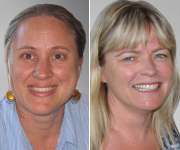AFTER a spectacular arrival in the early 1990s, evidence-based medicine quickly evolved beyond generating the best research evidence, to acknowledging a need to integrate this evidence with clinical expertise and patient values — to weave the science with the art of medicine.
Several of the articles in the latest MJA highlight that, in Australian clinical practice, the resulting fabric is not without flaws.
What happens, for instance, when clinicians seem to set aside the all-important evidence?
In one study, researchers report that average rates of arthroscopy for knee osteoarthritis remained essentially static during 2000–2009 in Victoria, notwithstanding credible evidence that arthroscopic debridement and lavage were probably ineffective for this condition.
In exploring the factors that influenced the uptake of this evidence, an editorial acknowledges the key role of clinical experience and expertise, and identifies that system factors such as funding policies can aid or hinder the effective incorporation of evidence into clinical practice.
A Perspectives article affirms that this is not an isolated instance, listing a dozen examples of widely used treatments that have been shown to be ineffective or harmful in many patients.
The authors propose a set of evidence-based strategies for removing barriers to translating evidence into practice, including a suggestion that professional indemnity not apply in cases of patient harm resulting from clear violation of accepted evidence-based standards.
Not all attempts to weave the best available evidence into clinical practice translate into tangible benefits for patients.
Two expert research groups, one led by Professor Mark Harris and the other by Professor Nick Zwar, experienced just this dilemma, when they trialled interventions aimed at enhancing evidence-based management of vascular risk factors and chronic obstructive pulmonary disease, respectively, in primary care.
Both studies employed a cluster randomised controlled trial design, and both found that improvements in the process of care do not necessarily lead to better health outcomes. They recommended that further, more intensive efforts may be needed to achieve any difference in these outcomes compared with usual care in general practice.
In commenting on their studies, an editorial argues that for trial results to be generalisable to the general practice population, they should ideally be conducted in the general practice environment by those who understand it — primary care researchers.
Perhaps in this way, the evidence can be better woven into practice, and the need for translation will be lessened.
There are other, more intimate, threads to the fabric of evidence-based practice.
In putting forward the concept of “narrative evidence-based medicine”, an article in The Lancet spoke of how, at the same time that interest in evidence-based “right” decisions was soaring, there was growing interest in patients’ lived experiences, illness narratives and the interior lives of clinicians.
The observations that “illness unfolds in stories, that clinical practice transpires in the intimacy between teller and listener, and that physicians are as much witnesses to patients’ suffering as they are fixers of their broken parts” echo throughout a Reflections article in the MJA on leaving a longstanding general practice role.
The Dr Ross Ingram Memorial Prize seeks to bring patient and practitioner stories into the much-analysed, contested and politicised fabric of Indigenous health.
Our 2012 winners are published in the latest MJA: Dr Mark Lock’s beautifully nuanced reconciliation of the personal and political sides of assimilation, and “The Gap”, a painting made to depict family healing by Indigenous researcher and artist Robyne Latham.
There is no doubt that the fabric of medicine is made stronger and more resilient from the interweaving of the best available research evidence.
Recognising and seeking to repair the imperfections is vital; but, as we all know, it’s the flaws in the fabric that point to its authenticity.
Dr Ann Gregory is acting editor of the MJA. Dr Ruth Armstrong is the senior deputy editor of the MJA and medical editor of MJA InSight.
This article is reproduced from the MJA with permission.
Posted 2 October 2012

 more_vert
more_vert
As an obvious proponent of the correct use of language Ray, you should know that referring to adult females as ‘girls’ is derogatory.
Come on girls do not spoil the great new image of our journal with “generalisable”! It is bad enough putting up with unremarkable and authored! Let us not have a journal in which the quality of the articles goes up but the butchery of the wonderful English does as well!